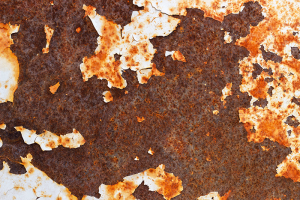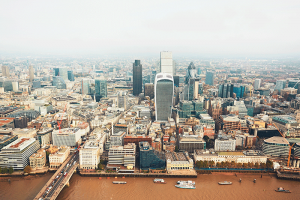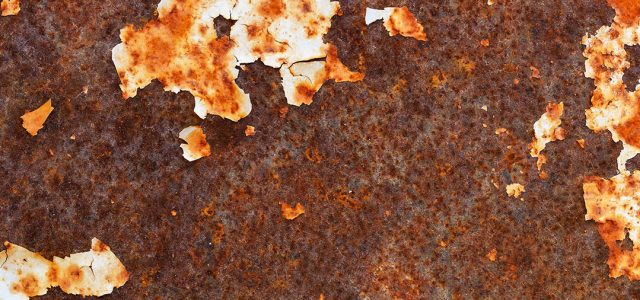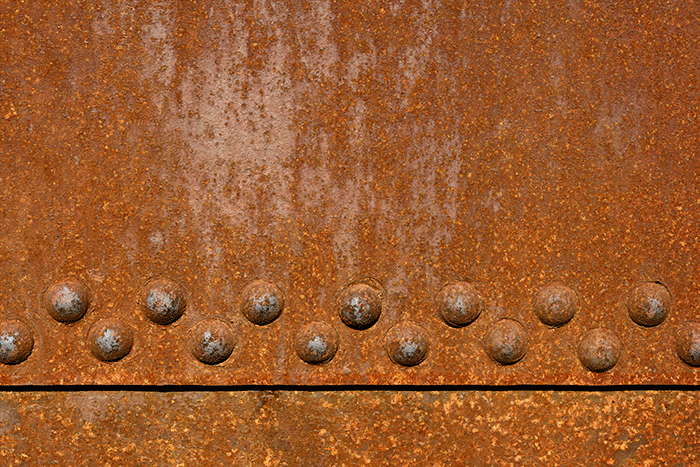When most metals come into contact with certain substances in the air or water, they undergo a chemical change which decreases the integrity of the metal. This process is called corrosion. Oxygen, sulfur, salt, and other materials can all lead to corrosion.
When a metal corrodes or deteriorates, it cannot hold the same loads as it did before corrosion began. At a certain point, corrosion can lead to dangerous conditions.
Metal used in construction is all subject to corrosion. Because of this, it is important to monitor and manage corrosion to avoid structural collapse.
What is the rate of corrosion?
The rate of corrosion is the speed at which any given metal deteriorates in a specific environment.  The rate, or speed, is dependent upon environmental conditions as well as the type, and condition, of the metal.
The rate, or speed, is dependent upon environmental conditions as well as the type, and condition, of the metal.
Corrosion rates are normally calculated using µpy (microns per year). In other words, the corrosion rate is based on the number of microns (thousands of a millimetre) it penetrates each year.
In order to calculate the rate of corrosion, the following information must be collected:
- Weight loss (the decrease in metal weight during the reference time period)
- Density (density of the metal)
- Area (total initial surface area of the metal piece)
- Time (the length of the reference time period)
Why corrosion rates matter
Corrosion rates determine the lifespan of metal-based structures. This dictates the choice of metals used for different purposes, and in different environments.
It also determines the maintenance requirements for structures: a metal structure in a wet and/or polluted environment may require more frequent maintenance than a similar structure in a drier or unpolluted environment .
Maintenance schedules are developed based on the types of calculations described above.
What is corrosion engineering?
Corrosion engineering is a relatively new profession dedicated to slowing, reversing, and avoiding the impact of corrosion on materials and structures. They are responsible for developing coatings and treatments that can be used on metals to improve the metals’ resistance to corrosion. They are also involved with the development of materials that are less vulnerable to corrosion.
Corrosion rates by category
Heated buildings with clean atmospheres like offices, shops, schools and hotels, represent a low corrosivity category and risk, with a very low-carbon steel thickness loss – less than 1.3µm/per year.
Also in a low risk category and risk with an annual corrosion rate between 1.3µm and 25µm are rural areas, areas with a low level of pollution and the interior of the buildings that are unheated and where condensation may occur (e.g. depots, sports halls).
 Corrosion rates in a medium risk category will be between 25 and 50µm for urban and industrial atmospheres with moderate sulphur dioxide pollution, coastal areas with low salinity, or the interior of production rooms with high humidity and some air pollution (e.g. food processing plants, laundries, breweries, dairies).
Corrosion rates in a medium risk category will be between 25 and 50µm for urban and industrial atmospheres with moderate sulphur dioxide pollution, coastal areas with low salinity, or the interior of production rooms with high humidity and some air pollution (e.g. food processing plants, laundries, breweries, dairies).
A corrosion rate between 80 and 200µm will be found in industrial areas with high humidity and aggressive atmosphere and the interior of the buildings that have permanent condensation and high pollution (C5-I category).
Coastal and offshore areas with high salinity will have a very high corrosion rate ranging from 80 to 200µm.
* 1µm (1 micron) = 0.001 mm
** The thickness loss values after a year of exposure. Losses may reduce after subsequent years.
*** The loss values used for the corrosivity categories are identical to those give in BS EN ISO 9223.
**** In coastal areas in hot, humid zones, the mass or thickness losses can exceed the limits of category C5-M. Special precautions must therefore be taken when selecting protective paint systems for structures in such areas.


